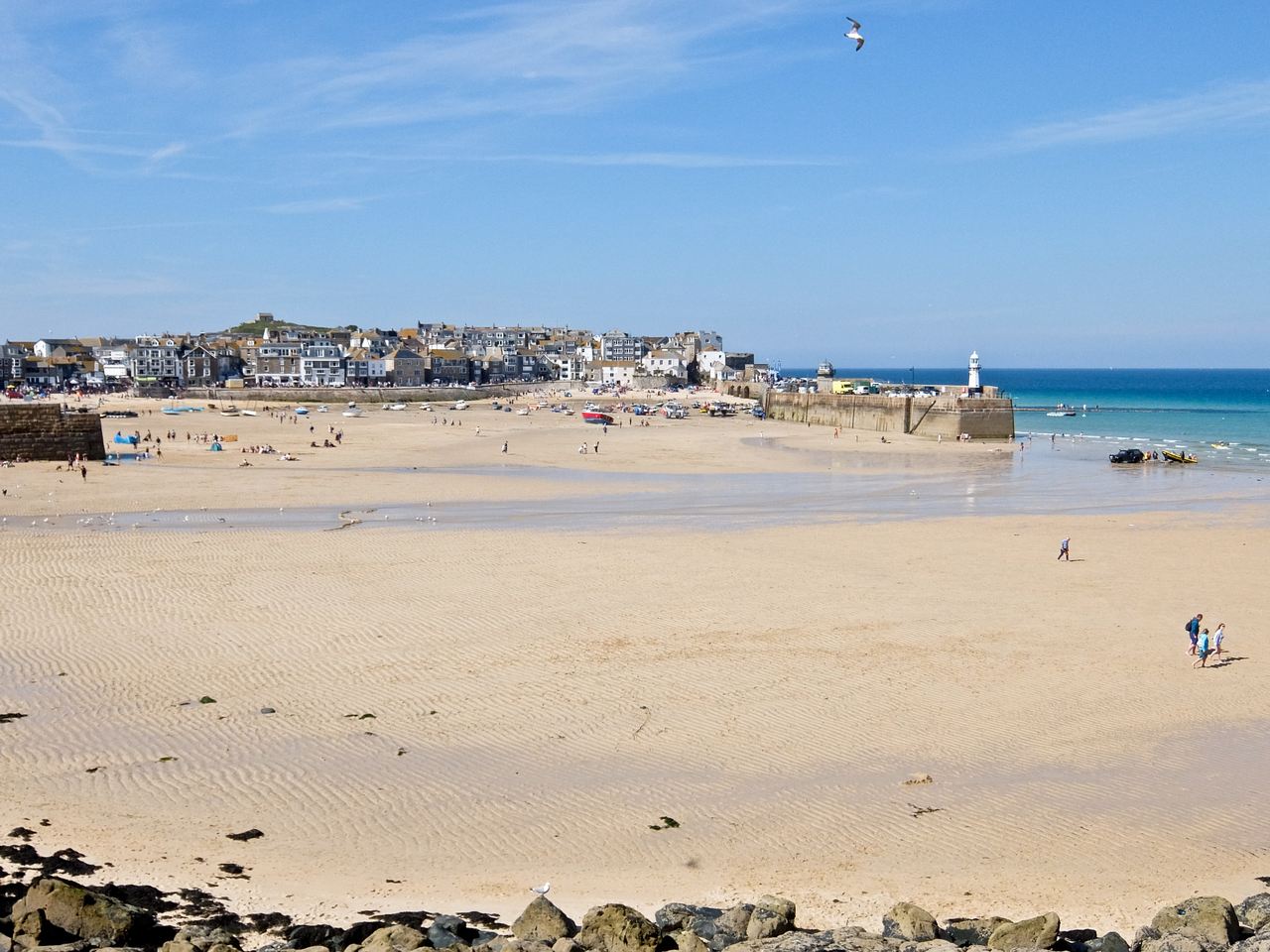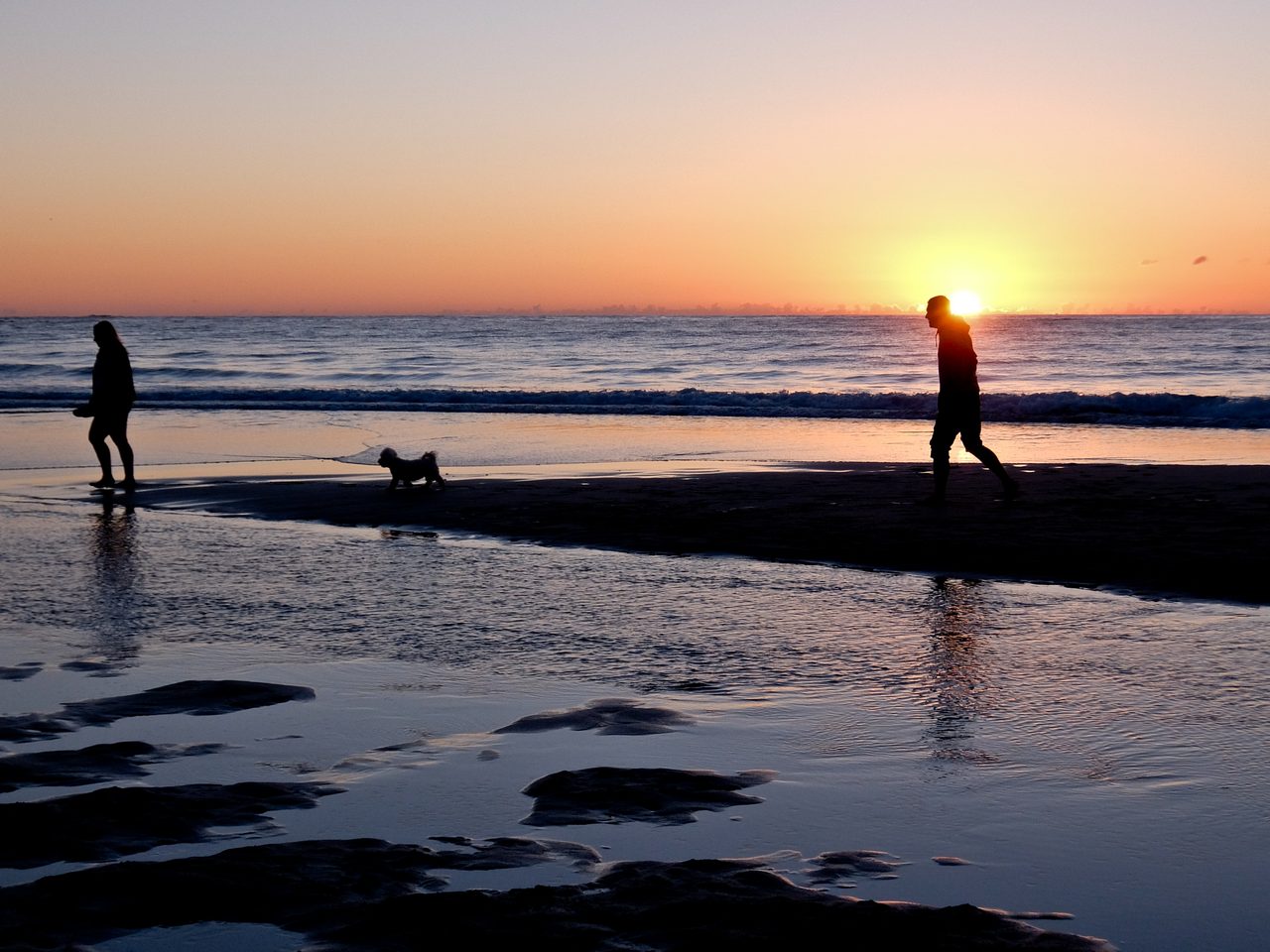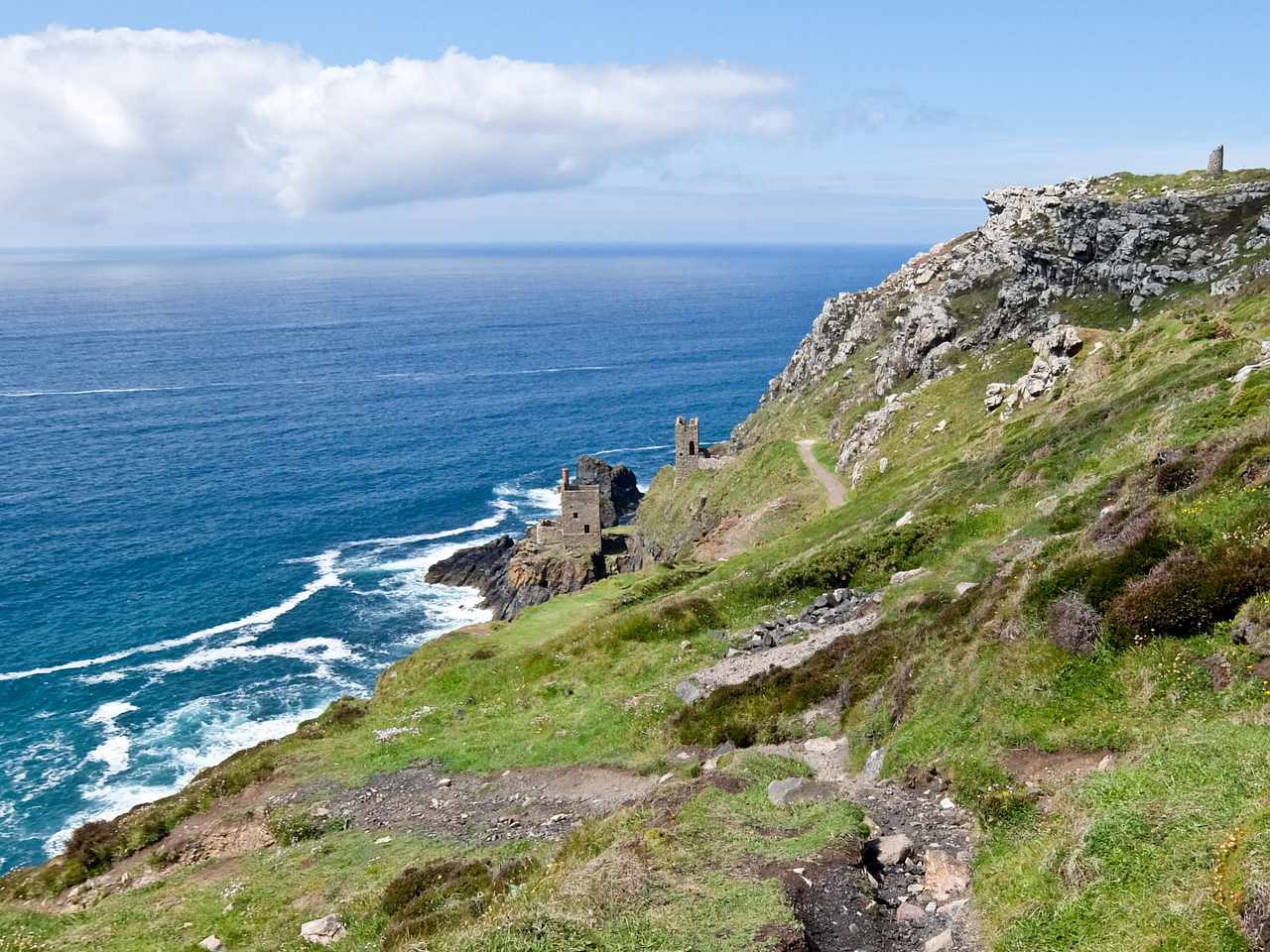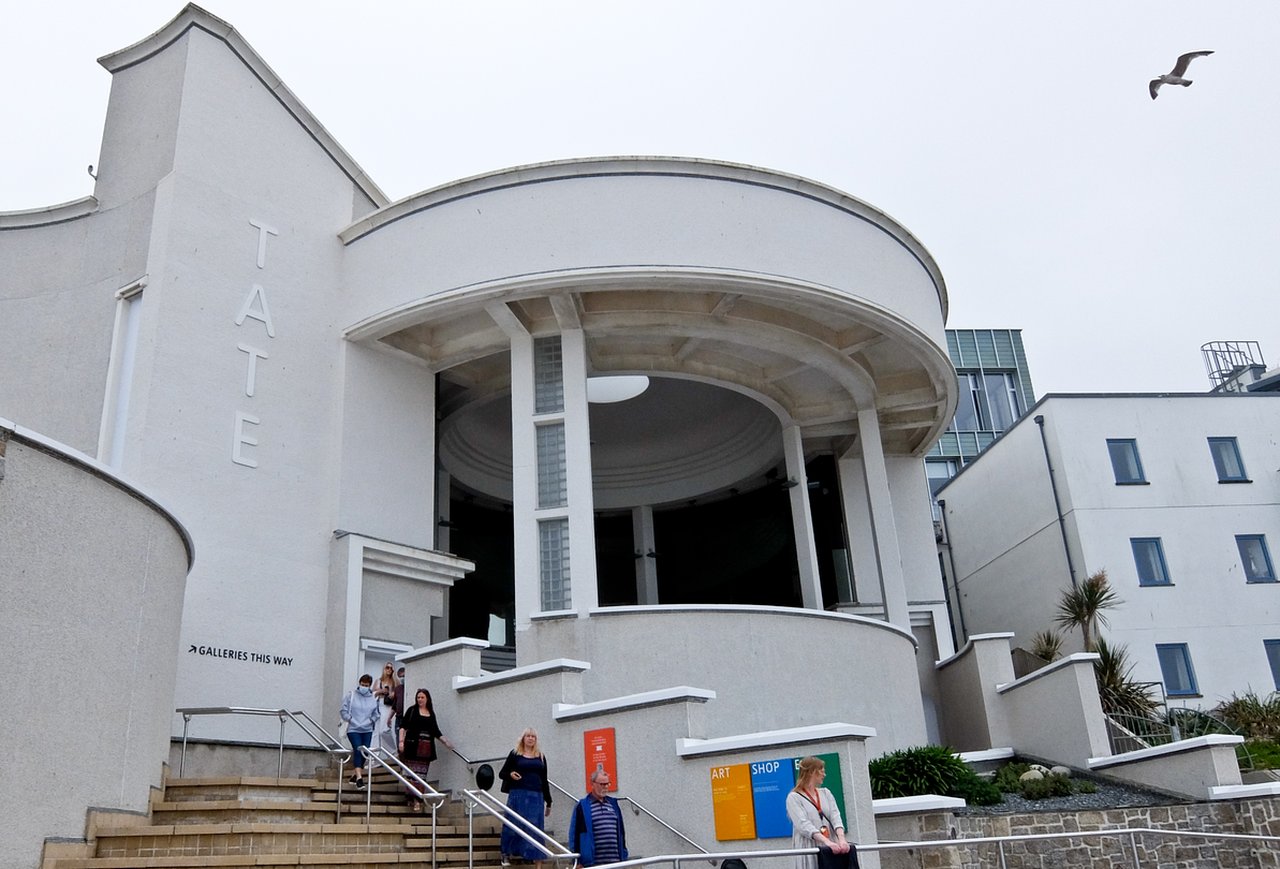A 6-day circular hike finds Cornish giants, prehistoric fortifications, ruined mines, lighthouses and Poldark locations explores St Michael’s Mount, lingers at Land’s End and finishes at Tate Modern.
Cornwall is justly famous for its coastal paths but they can get crowded. They’ve been a major draw for Europeans but travel restrictions are keeping them away. So this is a rare chance to enjoy the quiet trails, pristine nature and wild rugged cliffs in peace and quiet. And after the bustle of St Ives, it comes as something of a relief.
Day 1- St Ives to Marazion 14 kms 4.5.hours

It’s early when I set out from St Ives, yet there are already a few brave souls in the sea. I leave the coast and head up St Michael’s Way, part of the ancient pilgrimage route leading to Santiago de Compostela in Spain. Of course, I’m not going that far, just cross country to Cornwall’s south coast and St Michael’s Mount.
The path climbs and I’m soon at Trencorn Hill, a Neolithic Hill Fort, reputedly home to the Giant Trecobben, the distinctive rocks, his furniture – Giant’s Chair, Giant’s Cradle and Giant’s Spoon. The views are tremendous but it’s only later that St Michael’s Mount pops into sight, rising out of the sea just off the coast.
At Marazion, the tide is in and the trippers are out in force, so I take a boat across to the Mount. This is the Cornish quarter-sized version of Mont-Saint-Michel in Normandy, and also was a Benedictine abbey. The monks are long gone and it’s now owned by the National Trust.
The building is still lived in but you can visit the staterooms at the top of the house for spectacular views across the bay.
At this time of year the flowers in the terraced gardens, cleverly constructed on the slopes, are a riot of colour. The tide is lower so I cross the causeway and make my way back to Marazion. It’s a four-mile road walk into Penzance, tonight’s destination so I cheat and catch the bus.
Day 2 – Mousehole to Porthcurno 13.25 kms 5 hours
From Penzance to Mousehole, road walking is the only option so again I take the bus. It’s early and there are only a couple of wet-suited swimmers in Mousehole Harbour, once described by Dylan Thomas as ‘the loveliest village in England’. I climb up out of the port and follow the cliffs to Lamorna, another pretty village, captured by British Post-Impressionists in the early part of the 20th century.
It’s more up and down around small bays before reaching Penberth Cove with a handful of granite cottages, a cobbled slipway and a huge wooden capstan to pull fishing boats out of the water. It’s a delightful spot, tourists don’t really get here, so it’s no accident that it was used as Sawle Village in the Poldark series.
I can tell I’m getting close to Porthcorno, when I reach the Cable Monument, marking the first connection to the USA in 1880. The village itself owes its existence to an earlier cable installation linking to India in 1870 and the imposing offices are now a Telegraph Museum. Perched on the cliff above is the world-renowned open-air Minack Theatre, still valiantly presenting shows.
The beach here is one of Cornwall’s best and this is another Poldark location. It doubled as Nampara Cove in the dream sequence where Ross and Demelza strolled across the white sand.
Day 3 – Porthcurno to Sennen Cove 11kms 4 hours
The coastal scenery today is spectacular, with turquoise sea hosting white breakers seeking out the caves and arches hollowed out of the imposing cliff cathedrals of stone. In the far distance, I can see Land’s End and the Runnel Stone Reef, the infamous wrecker of numerous vessels. Between 1880 and 1923 over thirty steamships were wrecked, stranded or sunk in the area.
After an hour I arrive at Porthgwarra Beach, another Poldark location, where Ross took a skinny dip in its crystal waters. I climb up to Hella Point and then across Gwennap Head, past two huge navigation cones, to the coastguard lookout. There’s more Poldark here, the location for many sunset gallops across the cliffs.
I’m slightly dreading the crowds at Land’s End but it’s mercilessly quiet and I make my way to the First and Last House in England for ice cream. Offshore are a group of rocky islets known as The Longships with their very own solitary lighthouse, dating from the 19th century.

Later, on Mayon Cliffs, I’m reminded of how treacherous the seas can be. The rusting hulk of the 90m long RMS Mülheim cargo vessel lies below me, wrecked in 2003. From here I pass a turreted lookout tower and suddenly Sennen Cove is in sight.
Day 4 – Sennen Cove to Pendeen 13.5 kms 6 hours
I start the morning trudging across the enormous expanse of Whitesand Bay, the shallows full of apprentice surfers learning to catch Atlantic rollers. Soon I’m back on the cliffs getting close to the Botallack tin mining area and signs warn of concealed shafts.
Just ahead is Cape Cornwall, believed to be the most westerly point in the UK until the Ordnance Survey handed that honour to Land’s End 200 years ago. Still, it’s England’s only cape and a tin mine operated here from 1838 to 1883 and the chimney still stands. It’s a steep scramble to the summit and below me are the ruins of St Helen’s Oratory, built on the site of a 6th century church.

Botallack, in the 1870s, was the centre of the Cornish tin industry and over 500 people worked here. Ruined engine houses, with their distinctive chimneys, home to the steam engines that powered the mines, dot the landscape.
Standing stark on the cliffs is West Wheal Owles – the Poldark location for Wheal Grace and Wheal Leisure. The most iconic lie below, perched on a ledge precariously close to the sea. These are the Crown mines, featuring as the Grambler mine, with the help of CGI to repair the roof.
Further along, near Pendeen, is Levant Mine. The steam engine, which powered the mine, has been restored and is now the only working example in the UK. Its buildings served as the location for Tressiders Rolling Mill in Poldark.
Day 5 Pendeen to Zennor 14.75 km 4.5 hours
Geevor mine was the last mine to close in 1991and is now a museum. The winding tower and engine house still survive and the changing rooms where the miners set off to go underground are like the Marie Celeste. It makes for a fascinating couple of hours and you can even walk through 18th century underground tunnels.
My path takes me past Pendeen Watch Lighthouse, built in 1900 to protect shipping from the rocks of the Three Stone Oar. Then it’s down through secluded sandy coves and more warnings of hidden mine shafts. I have the path to myself apart from a couple of trail runners. Looming out of the mist is Gurnard’s Head, named after its resemblance to the fish. A steep flight of steps leads me to the Tinner’s Arms in Zennor, a quirky pub with rooms.
Day 6 Zennor to St Ives 10.3 km 4 hours
I’ve been warned that today’s walk is one of the toughest parts of the South West Coastal Path, so I’m keen to get going. I descend to a bay and encounter my first obstacle. There’s a huge field of boulders, with no obvious marked path, which requires a certain amount of scrambling.
The coast grows gradually less wild and I’m soon on my last climb up to Hellesveor Cliff. Suddenly I see St Ives in the sunshine with surfers out in force on Sunday morning.

The Tate St Ives overlooks the beach, and I go inside and reflect on what a long fantastic walk it’s been.
PACKAGE: On Foot Holidays has six nights from £825.
INFO: Visit Cornwall has information about the county.
TRAVEL: GWR has frequent trains to St Ives.
Credit: Source link